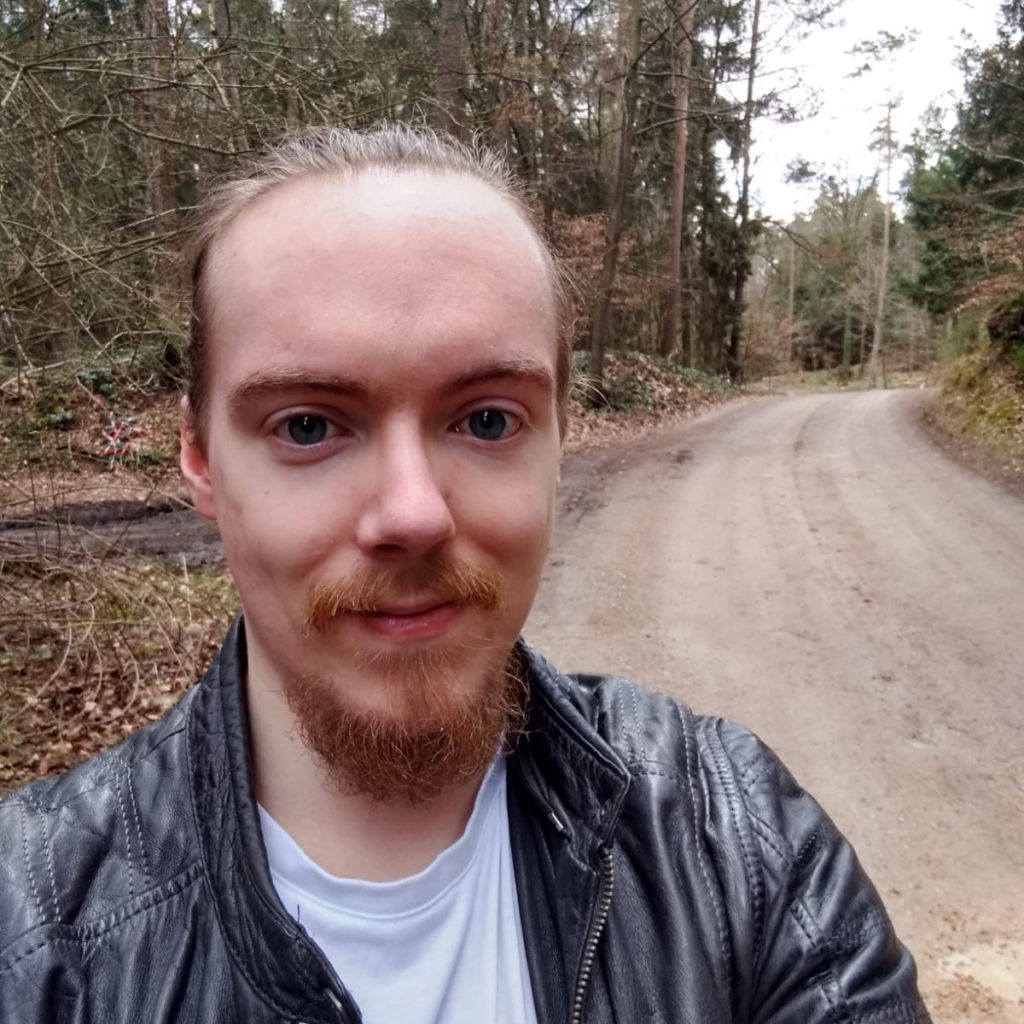
(altarpiece, 14th century, Trondheim; via wikimedia commons)
Did Ǫlvir Die For Faith? Martyrdom, Voluntariness and the Question of Perspective
When Norway’s Christian king, Óláfr Haraldsson, received a tip-off at Easter 1021 that his vassal Ǫlvir was presiding over a pagan feast of sacrifice, he dispatched his troops to summarily slay him and his companions. Those attacked had no opportunity to extract themselves from this affair. Death befell them, to all appearances, unexpectedly and without their being able to consciously opt for or against it. About a millennium later, adherents of neopaganism celebrate Ǫlvir as a pagan martyr who fell victim to a tyrant’s fanaticism. There is no overlooking the irony: none other than this king, Óláfr Haraldsson, achieved fame after his own death as a martyr and as Scandinavia’s most important native saint. “Martyrdom,” then, is a matter of perspective, a construction that depends less on (often unverifiable) personal convictions and decisions than on retrospective attributions by third parties, some formulated centuries later. As a typical element of Christian ideals of martyrdom, voluntariness suggests itself here as a key category for the analysis of medieval narratives.
While modern pagans may argue that Ǫlvir died for the common faith, from a medieval Christian perspective this episode is an apt element in the dossier of an assertive missionary king seeking to eliminate a threat to his own religion, which had only recently been established in Norway. The sparse sources, meanwhile, leave plenty of room for doubt about both of these interpretations. The great Icelandic historian Snorri Sturluson, who had the events written down more than 200 years after they occurred, does not inform us whether Ǫlvir was really a crypto-pagan or was falsely accused. As is typical of him, Snorri declines to evaluate what is described, telling us only how the eloquent chief Ǫlvir, in an earlier confrontation with Óláfr, had passed off the supposedly pagan festivals in his district as harmless, convivial drinking sprees with no religious background. While one should be extremely cautious about attributing to Snorri any sympathy for paganism, in view of his occasional hints of skepticism toward unbridled royal power this episode can certainly be interpreted in a variety of ways, depending on one’s point of view. Was it a legitimate intervention to protect the fledgling Norwegian church? Or was it an arbitrary murder, just one in a long line of royal atrocities? Whether Snorri considered Ǫlvir’s death justified or not, it is very difficult to ascribe voluntariness to the slain in this case. The room for maneuver granted to the chieftain seems too meager for him to have been able to formulate a reasoned intention to die. It seems that no acceptable alternatives were available to him; as the episode is presented, Ǫlvir had no option not to be executed.
Missionary Work By All Available Means
The fact that such an obscure individual case as that of Ǫlvir can continue to serve today as a source of religious identification is probably due to the room for interpretation opened up by Snorri’s account. For it is by no means the case that the Old Norse tradition knows of no other, clearly pagan victims of royal Christianization efforts – but their evaluation by the sources usually turns out to be unambiguously negative. Saint Óláfr’s predecessor in office and mission, Óláfr Tryggvason, spent much of his reign (995-1000) travelling the Norwegian coast and subjecting the local chieftains to his power and to the new faith. To some degree, he relied on voluntariness to build a loyal inner circle of allies. While the difference in terms of realpolitik between conversions on grounds of inner conviction and as a means of forging ties with the ruler for socio-economic reasons may have been negligible, true believers do receive a more positive evaluation in the sources than opportunists. When eloquence or generous political and economic incentives failed to have an effect, however, Óláfr threatened violence, and when this threat alone failed to trigger a change of heart, he made good on it. Hence, brutal executions of pagan chieftains are among the core elements of his saga. In terms of cruelty and ingenuity – whether on the part of the ruler said to have ordered the executions or those who tell us about them – these deaths are every bit the equal of Christian legends of martyrdom. The steadfast adherence of the persecuted to their inner convictions leads to the grotesque destruction of their bodies.
The main problem, and this brings out the fundamental difference from Christian martyrdom, is the perspective. It is not the followers of the threatened and persecuted religion who tell us about the events, but the victorious persecutors’ co-religionists. However similar the individual situations of the murdered Christians of Roman antiquity and the pagans of the late Viking Age may have been at times, in the victor’s historiography adherence to the old traditions becomes a foolish, if not reprehensible, enterprise. “Good” pagans do crop up in the written sources, but they either convert sooner rather than later (such as Óláfr Tryggvason, who is said to have turned from a largely virtuous de facto agnostic into the “Apostle of the North” at a young age) or die long before the height of the Christianization period, and thus never undergo any real conflict of faith in the first place. Those who cling to paganism to the bitter end, despite being presented with a better alternative, the only real alternative, cannot be good people at all according to this perspective. Some of them are not even real people but come from a completely different world: Eyvindr kinnrifa, a chieftain and sorcerer who was tortured to the brink of death by Óláfr Tryggvason, allegedly justified his stubbornness by stating that he did not possess a human soul amenable to baptism. Not everyone can be “saved” by God’s message.
Voluntary Death As a Religious and Social Norm
In the sagas, those who die for the pagan faith are mainly male members of a small segment of the upper class who practice magic or are at least involved in religious ceremonies. In the opinion of ecclesiastical authors such as the emphatically pro-royal author of the Óláfs saga Tryggvasonar, Oddr Snorrason, this was an old elite that richly deserved to be replaced. All in all, the sources report a far greater number of converts than people killed – after all, the goal here is to narrate a story of success. The few but high-ranking fatalities serve as a warning amid the complex tangle of opportunism, coercion and religious zeal at the time of Christianization: when Óláfr Tryggvason, as a provocation to a pagan assembly, proposes to execute not just slaves but also leaders and wives as human sacrifices, and has a chieftain he dislikes demonstratively killed, the result is not mass martyrdom but mass baptism. Almost no one wants to sacrifice to the gods when their own life could be the offering. In contrast, the martyrs of the Christian legendary tradition all too willingly give up the integrity of the body in order to preserve the incomparably more valuable integrity of the soul.
The few pagan martyrs the sources tell us about lose both. While good Christians do not resist, but face death voluntarily and with dignity, the sorcerers vainly seek help from dark powers to save their lives. The saga of Óláfr Tryggvason tells of the conjuring of storms, transformational magic and superhuman leaping ability; the enemies of the missionary king do everything within their power to escape him. None of them succeeds: too great is the power with which God has endowed Óláfr and his bishop. Even the aforementioned sorcerer Eyvindr tries to make off at first. After his capture, he refuses baptism only because it is not a real option for him as an air spirit in human form. Episodes like this are meant to send a clear message: how can the Germanic belief in gods be taken seriously as a religion if even its most ardent followers are unwilling to die for it?
These accounts are all the more effective because they depict a double breaching of norms. Even detached from the Christian rhetoric of martyrdom, which considers voluntary death for the faith essential, the sorcerers infringe the indigenous values of ancient Scandinavia. It is not only martyrs but also ideal warriors who (supposedly) die voluntarily, without fear or doubt. Cunning may bring recognition, but those who meet mortal danger not with their wits or physical strength, but with seiðr, with witchcraft, arouse distrust, fear and repugnance among medieval recipients. Due to the absence of a narrative of voluntary death, those killed fail to live up to a key normative expectation on both a religious and secular level. Even Snorri Sturluson’s sober portrayal has to be interpreted in a generous light if we are to endow Ǫlvir with the traits of a rather unspectacular hero, who can at best serve as an exemplar of resistance to royal tyranny, but who no longer has much to do with the concept of martyrdom, which is imbued with voluntariness. In the less nuanced sources on Nordic Christianization more influenced by saintly legends, martial heroism and sainthood merge almost completely as fearless, self-sacrificing Christians encounter selfish pagan sorcerers. And in such narratives a voluntary death is mainly the preserve of the good.
Suggested Citation: Dolinsky, Markus: “Did Ǫlvir Die For Faith? Martyrdom, Voluntariness and the Question of Perspective”, Voluntariness: History – Society – Theory, June 2022, https://www.voluntariness.org/did-olvir-die-for-faith/






